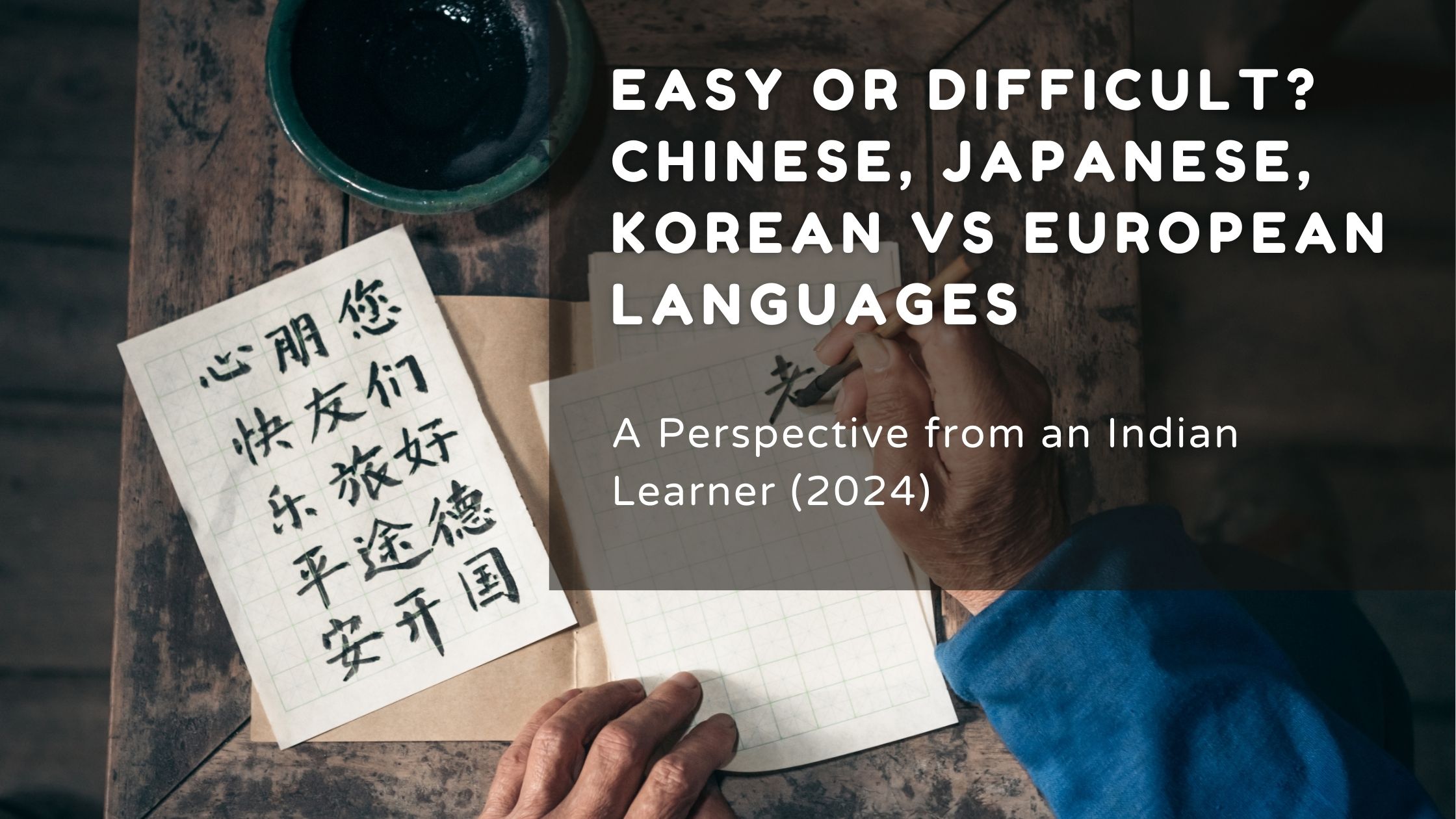In the landscape of language learning, Indian students often gravitate towards European languages like French, German, and Spanish. However, exploring East Asian languages such as Chinese, Japanese, and Korean (CJK) can offer unique benefits and interesting challenges. Here’s a comparative analysis from an Indian learner’s perspective, highlighting why CJK languages might be worth considering over their European counterparts.
Chinese (Mandarin):
Mandarin Chinese includes sounds that can be easily represented using the Devanagari script, such as श (sh), श्य (shy), च (ch), छ (chh), and स (s). Mandarin is a tonal language, which means the tone in which a word is spoken can change its meaning, this feature makes the language different rather than difficult. Indian languages like Punjabi also have tonal elements for a few words, making it somewhat familiar.
Japanese:
Japanese pronunciation is relatively simple and straightforward, with no sounds that could reasonably be confused. This phonetic simplicity makes it easier for learners to pronounce words correctly.
Korean:
Korean has sounds that do not exist in English but have corresponding pronunciations in Devanagari, such as घ (gh), ग (g), क (k), and र (r). Korean, however also has numerous spelling rules that affect pronunciation, making it comparatively challenging for beginners.
European Languages:
Languages like French, German, and Spanish generally have phonetic systems that might initially seem easier to Indian learners due to the influence of English. However, they do have their own set of unique sounds and pronunciation rules which can be tricky to master, especially the nasal sounds in French and the umlauts in German.
Mandarin Chinese:
Mandarin grammar is relatively straightforward and similar to English in some aspects. It consists of placing written characters in the correct order without the need for conjugations or inflections. This makes forming basic sentences easier compared to the grammatical rules of Korean and Japanese.
Japanese:
Japanese grammar is formulaic and logical, with sentences bound by clear logic. However, Japanese uses three writing systems: Hiragana, Katakana, and Kanji. While each system has specific use cases, juggling them can be challenging.
Korean:
Korean grammar is quite complex, with the use of postpositions (particles) rather than prepositions, similar to Hindi (e.g., “पार्क में” vs. “at the park”). Korean particles often come in pairs, adding another layer of complexity. Moreover, Korean grammatical constructions can be more intricate than their Japanese counterparts.
European Languages:
European languages typically follow Subject-Verb-Object (SVO) word order, which is familiar to English speakers. However, languages like German have cases (nominative, accusative, dative, genitive), and French has gendered nouns and verb conjugations, which can pose significant challenges.
Chinese (Mandarin):
Learning Chinese characters (Hanzi) may seem to be daunting, but each character is like a logo of a company, typically with one pronunciation, which helps streamline the learning process.
Japanese:
Japanese requires learning many Chinese characters (Kanji) having multiple pronunciations, plus mastering two other syllabaries (Hiragana and Katakana). Each system has specific use cases, but the challenge is when all of them are taught together. That’s why at The Oriental Dialogue, we go one-by-one making it easier for the learner to understand, recall and use them.
Korean:
Korean Hangul is a brilliantly efficient writing system, and is very similar to Devanagari with spelling rules. Once this system is mastered at the beginning of the course, further learning is smooth.
European Languages:
European languages use the Latin alphabet, which is already familiar to Indian learners due to the use of English. However, special characters and accents in languages like French (é, è, ç) and German (ä, ö, ü) require additional learning.
Chinese, Japanese, and Korean:
These languages are increasingly relevant due to the economic powerhouses they represent. China, Japan, and South Korea are major players in global markets, and proficiency in their languages can open doors to numerous career opportunities in technology, manufacturing, finance, and more. Additionally, cultural ties and historical connections with India make these languages particularly valuable for Indian learners.
European Languages:
French, German, and Spanish remain important due to historical ties, cultural influence, and economic relationships with Europe and Latin America. They are widely spoken and are official languages in many international organisations.
Conclusion
While European languages have their own appeal and practical benefits, learning Chinese, Japanese, or Korean offers unique advantages for Indian students. The phonetic similarities to Indian languages, the logical grammatical structures, and the growing economic significance of China, Japan, and South Korea make CJK languages a compelling choice. Despite the challenges, the rewards of mastering these languages can be substantial, providing a significant edge in the global job market and deepening cultural understanding.







